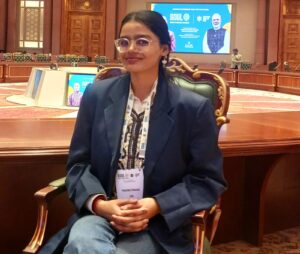INTRODUCTION
Few matters cause as much emotional discussion or active debate throughout Delhi’s busy metropolitan environment than the issue of protecting cows. Within Hindu beliefs the sacred cow stands as the most respected animal in India’s religious framework as well as legal system. As India’s capital city Delhi represents this developing situation by merging religious beliefs with economic considerations and urban development demands in its mutating cow protection rules. The protection of cows in Delhi exists as a narrative which incorporates sacred religious events together with political disputes and societal advancements starting from early scriptures to present-day laws. The Delhi Agricultural Cattle Preservation Act, 1994, bans the slaughter of all agricultural cattle, with violations punishable by up to five years in prison and fines up to ₹10,000. The city displays a mix of religious practice and legal enforcement because the Delhi-National Capital Region has approximately 200 active cow preservation groups combined with evidenced ongoing illegal slaughterhouse operations.
HISTORICAL EVOLUTION OF COW PROTECTION MOVEMENTS
Mass cow protection movements gained rapid momentum during the 1870s in the Punjab along with North-West provinces, Awadh as well as Rohilkhand. The Arya Samaj transformed this feeling into a national movement with their exceptional leadership abilities. Vijaypal Baghel works to protect the cow while directing north Indian popular movements since the 1870s. The establishment of the Gaurakshini sabha which protected cows took place first in Punjab province during 1882. The movement spread rapidly all over North India and to Bengal, Bombay, Madras and other central provinces. Through its organization the group located loose cows before collecting them to care for them within establishments named gaushalas (cow refuges). Private charitable networks spread across North India dedicated themselves to obtaining rice donations from the public before combining these contributions to resell them for operating the gaushalas.
Arya Samaj and its leader Dayananda Saraswati declared their support for the early protection of cows along with its organization. In 1881 Dayananda Saraswathi became the author of the book Gokarunanidhi (Ocean of mercy to the cow). During Dayananda’s time the cow protection movement started as a non-Muslim targeted effort but it slowly turned into a focal point for religious tension between communities.
After gaining independence through 1947 India included cow protection as a constitutional requirement. In a rejection of a full ban on cow slaughter the Constituent Assembly accepted economic cases presented by B.R. Ambedkar and other leaders demonstrated the value of cattle and preservation of only prohibited cow and calf killing through the Directive Principles of State Policy (Article 48). Since state authorities now retained authority to decide about cow protection laws the situation led to varying rules among different regions.
Delhi Agricultural Cattle Preservation Act of 1994 marked the definitive change by the Congress government in power. A ban under the 1994 Delhi Agricultural Cattle Preservation Act prohibited any activities regarding all “agricultural cattle” including cows, bulls, bullocks and calves in the region. The Act served to protect cattle based on their market value together with cultural traditions as the census revealed Delhi reached over 9 million residents.
Click Here To Download The Paper


📌Analysis of Bills and Acts
📌 Summary of Reports from Government Agencies
📌 Analysis of Election Manifestos

